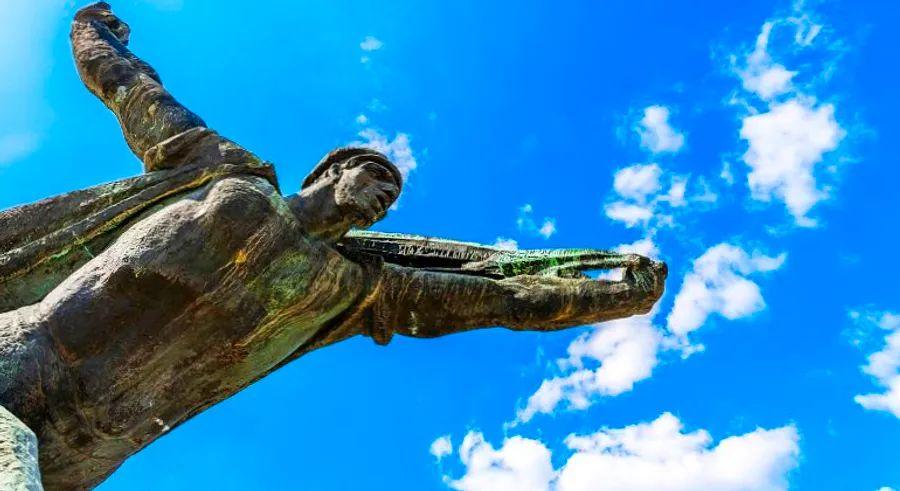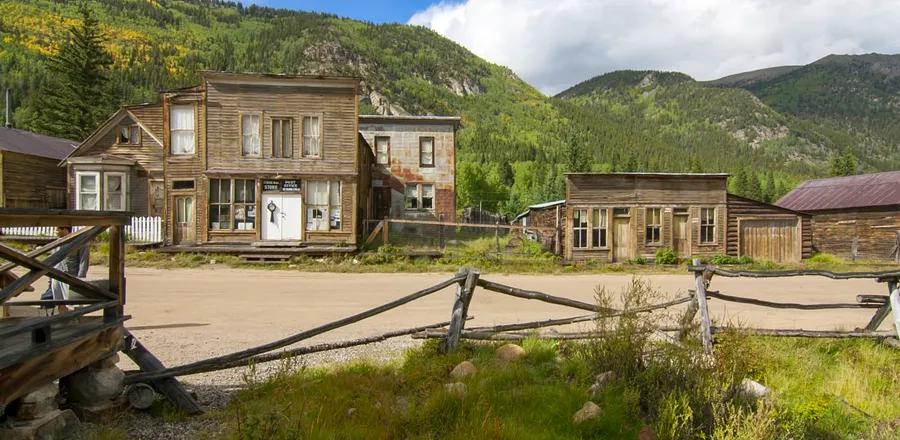Memento Park in Budapest: The final resting place for communist statues

Vladimir Lenin, Karl Marx, and other prominent Hungarian communist leaders stand in quiet repose behind the stark brick walls of a unique statue park in the hilly southern suburbs of Budapest, creating a somewhat surreal museum experience.
When the Iron Curtain fell in 1989, symbols of the dictatorship were torn down from the city center and hidden away, out of public view.
After the collapse of communism in 1991, Memento Park became the final destination for these communist statues. (Memento Park, Budapest, Balatoni út - Szabadkai utca corner, 1223 Hungary; +36 1 424 7500)
Though it’s located far from the lively center of Budapest, the park still attracts thousands of visitors, with most travel guides recommending it as a must-see.
Monumental cemetery
The entrance to Memento Park is hard to miss – a chaotic blend of red bricks that seems to pay tribute to social realism, resembling a Greek temple in its own unique way.
Proletariat anthems blare from a small kiosk where visitors can buy tickets to the park, along with communist memorabilia and CDs of the aforementioned worker's songs.
The statues standing in the snow give the park an added “Soviet” atmosphere – that is, until tourists arrive to hurl snowballs at Lenin and build socialist-themed snowmen.
Just inside the entrance, an old Trabant – a classic car from East Germany popular in Hungary before the 1990s – is displayed as an interactive art installation.
Next to it is a phone booth where you can listen to the voices of communist figures like Joseph Stalin, Mao Zedong, Che Guevara, and other prominent Hungarian members of the Communist Party.
A sign inside the booth reads: 'This phone cannot be used for national or international calls. It only lets you travel back in time.'
Further along is a bronze sculpture of socialist leaders who were once prominent figures in Budapest's city center.
Memento Park was conceived by Hungarian architect Ákos Eleőd, who won a design competition for the project in 1991. He describes the park as a space 'about dictatorship.'
There are approximately 42 statues scattered throughout the park, each one telling its own unique story.
Some statues are easy to recognize, like Lenin standing on a pedestal, mid-speech.
Others are busts of Hungarian communist leaders who are less known outside of Hungary than their Russian counterparts. Some statues are symbolic, like a massive pair of hands cradling a globe-like figure.
Communist-era relics

Across from the entrance, a pair of colossal boots rests atop a massive platform.
This monument pays homage to the original eight-meter-tall bronze statue of Stalin, which was toppled during the Hungarian Revolution on October 23, 1956.
The statue was dismantled, chopped up, leaving only the boots behind.
Today, the replica serves as both a tribute to the revolution and, in its strange way, to Stalin himself.
Visitors can climb the stairs at the back of the monument to reach a balcony, where they can enjoy a stunning view of the park entrance.
The bunker-like space inside the grandstand is definitely worth a visit. Here, dusty statues and busts of Lenin are kept in the shadows, along with odd mementos of the communist leader as a young child.
The barracks beside the grandstand hosts an exhibit focused on the downfall of the communist regime.
A small screening room displays footage of Hungary’s Secret Police in training. Between 1958 and 1988, hundreds of short films were produced to train agents and spies in maintaining 'law and order.'
The brief clips, lasting around 10 to 15 minutes each, offer a compelling glimpse into this once-secretive operation. Among the unusual content is a guide on how to secretly install a camera in your handbag to spy on neighbors.
Memento Park is accessible by the local bus 150 heading towards Campona, which can be boarded from the Kelenföld train station (Metro Line 4) or Újbuda-központ.
A direct bus service operates from Deák Ferenc Square at 11 a.m. daily, taking visitors straight to the entrance of Memento Park.
Memento Park welcomes visitors from 10 a.m. until dusk, open every day throughout the year.
Echoes of the past

For those seeking a deeper understanding of social realism and Hungary's life behind the Iron Curtain, remnants of its past can be found scattered across Budapest in more subtle forms.
One such source is the city's street names. Some have been crossed out in red, replaced with new titles that often refer to names from the communist era or carry communist associations.
While many of the statues originally placed at the citadel on Gellért Hill have moved to Memento Park, a few imposing works of social realism still stand proudly at their original locations.
For a more playful trip into the past, visit the Children’s Railway in the Buda Hills, where nearly all the staff are schoolchildren. Once part of Hungary’s Communist youth organization, the Pioneer Group, this nostalgic railway retains its old-world charm without the socialist messaging.
For an immersive experience in retro Hungary, take the wheel of a Trabant and explore the city in style. (Rent a Trabant; +36 30 946 3484)
Since the fall of communism, Trabbies have become a cult phenomenon. Some have been carefully preserved and are now available for rental, offering brave visitors the chance to drive a vintage two-stroke engine through the bustling streets.
At Bambi Eszpresszó, visitors can step into a classic Budapest institution that has remained largely unchanged since the 1960s. From the strong black coffee to the iconic red plastic seats, the place offers a genuine taste of the past. (Frankel Leó út 2/4, Budapest; +36 1 212 3171)
Another cherished Budapest staple is the Tisza Shoes store (Károly krt. 1, Budapest; +36 1 266 3055). The Tisza brand, founded in 1971, was once the only choice for locals. Although capitalism nearly wiped it out, Tisza made a comeback as a retro, albeit more exclusive, fashion label.
Original communist-era memorabilia can still be found at Ecseri Piac, a popular flea market in Budapest.
This sprawling flea market, open Monday to Saturday from 8 a.m. to 4 p.m. (3 p.m. on Saturdays), offers a treasure trove of items ranging from antiques to quirky collectibles.
Among the porcelain figurines, vintage gramophones, and secondhand cameras, you can still find portraits of Lenin and other communist relics.
To reach this spot, head to Boráros tér in Pest and catch the 54 or 55 bus to Használtcikk Piac.

1

2

3

4

5
Evaluation :
5/5